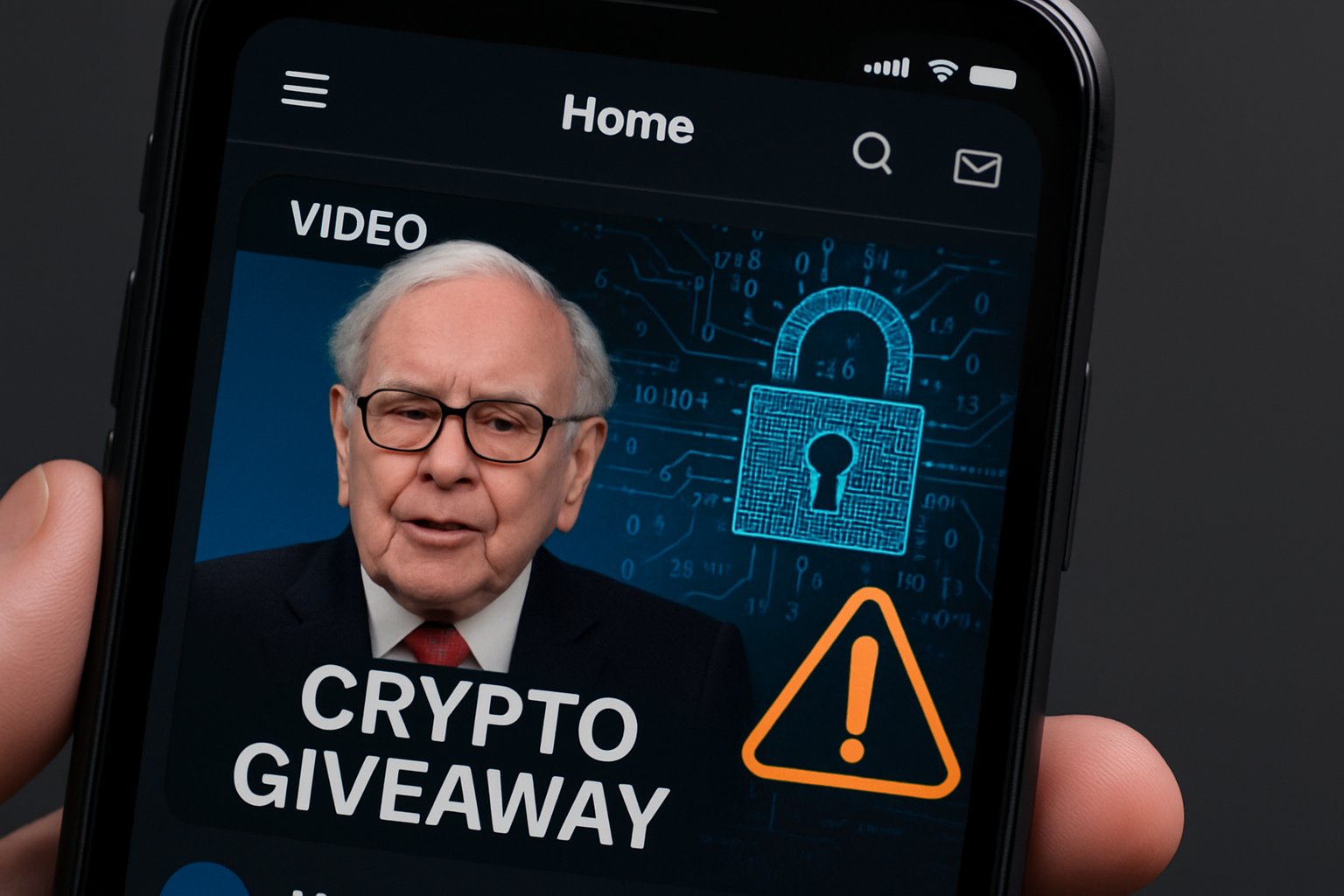
AI CERTS
1 day ago
Deepfake Warning: Buffett Deepfake Crypto Scam Surge
Moreover, TikTok and Instagram feeds repeatedly surface similar celebrity endorsements, each pushing fraudulent deposit links. Victims deposit small activation fees, yet their crypto vanishes forever. Consequently, Berkshire Hathaway released its "It's Not Me" statement on 6 November 2025. Lawmakers, regulators, and security vendors now scramble to quantify the growing financial damage. Meanwhile, organised fraud rings scale campaigns faster than platforms can respond. This article maps the recent timeline, exposes economic impact, and outlines actionable defenses.
Readers will also discover relevant certifications to strengthen enterprise security teams. Furthermore, every section concludes with concise takeaways for busy professionals. Let's examine how this threat unfolded and what comes next.
Key Buffett Scam Timeline
Investigators traced the first Warren Buffett deepfake clips to mid-2024 Facebook ads. Soon, TikTok users reported identical footage promoting flashy Crypto Giveaways with countdown timers. Consequently, cybersecurity forums issued an early Deepfake Warning, yet many investors missed the posts.

Berkshire Hathaway intervened on 6 November 2025 with its "It's Not Me" bulletin. Reuters quickly amplified the statement, driving mainstream coverage and platform takedown requests. Meanwhile, Federal agents warned that deepfake vishing schemes were already targeting diplomats.
Subsequently, senators Hawley and Blumenthal demanded an FTC and SEC review of Meta's ad sales. The timeline shows an arms-race dynamic between scammers and regulators. These milestones clarify how quickly deepfake infrastructure matures.
Each milestone escalated public anxiety and platform pressure. Next, we examine how scammers refine their tactics.
Evolving Deepfake Scam Tactics
Scammers constantly tweak videos to outpace detection algorithms. Initially, lip-sync mismatches exposed cheap fakes. Now, diffusion models align mouth movements with synthetic voice convincingly.
Moreover, background noise and subtle camera shake add perceived authenticity. TikTok algorithms reward this realism, pushing clips into finance feeds before moderation triggers. Consequently, Crypto Giveaways gain viral momentum within hours.
Additionally, scammers overlay live comment widgets that simulate viewer excitement and urgency. Artificial engagement masks the synthetic origin, delaying platform flags. Security analysts issue a renewed Deepfake Warning whenever novel camouflage appears.
Nevertheless, adversaries still leave small artifacts in shadows and hair contours. Teams that track such cues can publish another Deepfake Warning before mass propagation.
These evolving tactics amplify deception while compressing reaction windows. Understanding the financial stakes becomes essential, so the next section quantifies the damage.
Latest Financial Impact Figures
Chainalysis estimates $9.9 billion flowed into scams linked to Warren Buffett deepfake themes during 2024. In contrast, Bitget and partners link $4.6 billion specifically to Asian rings. While methodologies differ, both sets reveal alarming growth.
- 2025 Deloitte projection: U.S. fraud losses could reach $40B by 2027.
- 87 deepfake scam rings dismantled in Asia during Q1 2025.
- Meta internal estimate alleges $3.5B six-month revenue from high-risk scam ads in 2024.
- On-chain data attributes billions to pig-butchering schemes, not just Crypto Giveaways.
Furthermore, Berkshire reports multiple consumer complaints referencing Warren Buffett deepfakes, yet losses remain unquantified. Consequently, investigators treat every Deepfake Warning as a potential multimillion-dollar risk signal. Analysts issue a fresh Deepfake Warning whenever on-chain spikes align with viral videos.
However, dollar totals mask intangible trust erosion. Investors hesitate, advertisers pull back, and regulators intensify scrutiny.
These figures confirm escalating stakes for platforms, brands, and users. The following section explores who bears responsibility for mitigation.
Ongoing Platform Liability Debate
Meta, YouTube, and TikTok monetize vast ad inventories that scammers exploit. Platforms claim proactive removals, yet lawmakers highlight slow reaction times. In November 2025, senators cited internal Meta documents estimating ten percent revenue from risky placements.
Moreover, Berkshire's legal team questions whether disclaimers satisfy consumer protection laws. Consequently, regulators may mandate origin labels on synthetic media to curb fraud. Industry bodies treat the pending rules as an implicit Deepfake Warning to advertisers.
Liability debates will shape ad policies and detection investments. Next, we outline practical defense measures for security teams.
Defense Strategies For Teams
First, verify video provenance using reverse image search and blockchain fingerprints. Secondly, require secondary confirmation through official Warren Buffett channels before sharing investment links. Moreover, deploy real-time voice analysis to catch cloned intonation anomalies.
- Enable multi-factor authentication on all crypto wallets.
- Train staff to flag urgent Crypto Giveaways or unexpected endorsements.
- Subscribe to vendor threat feeds that issue immediate Deepfake Warning alerts.
Professionals can enhance skills through the AI Network Security™ certification. Consequently, certified analysts recognise deepfake pipelines and respond swiftly.
Adopting layered controls reduces exposure and speeds incident containment. Finally, we assess future regulatory momentum.
Regulation And Future Outlook
The FTC and SEC consider new penalties for deceptive AI marketing. Meanwhile, European lawmakers debate mandatory watermarking for synthetic advertising. Global alignment remains uncertain because jurisdictions weigh innovation against fraud deterrence.
Nevertheless, each public consultation cites the Buffett incident as a vivid Deepfake Warning for investors. Consequently, industry coalitions push open provenance standards to minimise future Deepfake Warning incidents.
Regulatory clarity will dictate budget priorities and consumer trust. We now summarise the main insights and recommended next steps.
AI deepfakes have turned trusted voices into scalable attack vectors. The Warren Buffett episode illustrates how quickly Crypto Giveaways can trigger billion-dollar fraud cascades. Statistics from Chainalysis, Deloitte, and Bitget confirm accelerating on-chain losses. Meanwhile, platform liability debates and upcoming regulation will reshape advertising economics. Consequently, a single unverified clip can erode decades of brand equity overnight. Therefore, decisive education and tooling remain non-negotiable for financial institutions.
Security teams must combine provenance checks, staff training, and certification-backed expertise. Consider advancing your knowledge through the AI Network Security™ program. Taking proactive steps today will safeguard users and brands against tomorrow's synthetic threats.



